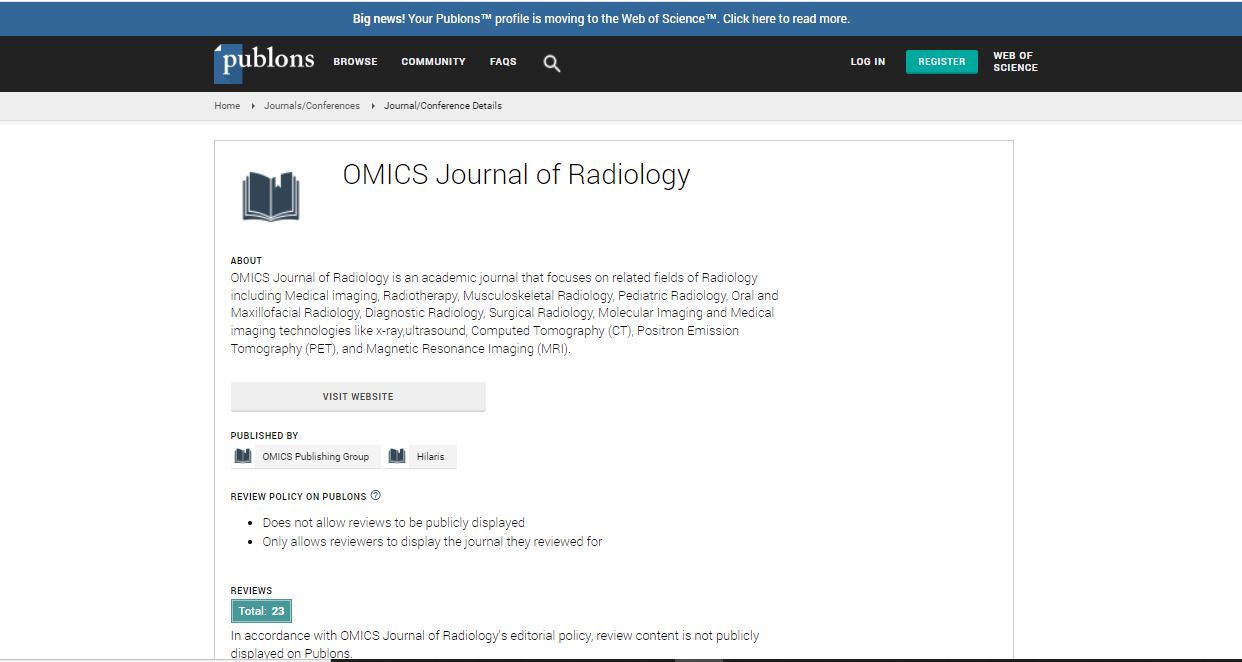Our Group organises 3000+ Global Conferenceseries Events every year across USA, Europe & Asia with support from 1000 more scientific Societies and Publishes 700+ Open Access Journals which contains over 50000 eminent personalities, reputed scientists as editorial board members.
Open Access Journals gaining more Readers and Citations
700 Journals and 15,000,000 Readers Each Journal is getting 25,000+ Readers
Google Scholar citation report
Citations : 551
Journal of Radiology received 551 citations as per Google Scholar report
Journal of Radiology peer review process verified at publons
Indexed In
- Index Copernicus
- Google Scholar
- Open J Gate
- Genamics JournalSeek
- ResearchBible
- Electronic Journals Library
- RefSeek
- Hamdard University
- EBSCO A-Z
- OCLC- WorldCat
- SWB online catalog
- Virtual Library of Biology (vifabio)
- Publons
- Geneva Foundation for Medical Education and Research
- ICMJE
Useful Links
Share This Page
Adequacy of clinical information on radiology request cards from medical admission unit
3rd International Conference on Radiology and Imaging
Mohamed Abbas
James Cook University Hospital, UK
Posters-Accepted Abstracts: OMICS J Radiol
Abstract
Background: The easiest and best way of communication between the clinician and radiologist is the radiograph request form. Requests should be completed accurately and legibly to avoid any misinterpretation. In our practice, we have noticed that radiology request cards sometimes do not contain enough information. There is evidence that inadequate clinical information is associated with an increased level of inaccurate reports. Standard: All submitted radiology request forms should contain adequate information. Methods: 150 radiology request forms have been selected including X-ray, CT scan and Ultrasound scan requests. Data items collected respectively were: 1) clinical information provided in form of brief clinical history, brief clinical examination findings and/ or other investigation findings 2) question to be answered and 3) identifier for the person making the request. Results: In total, there was relatively low interest in providing contact detail on the cards (79.3%). Clinical information in terms of brief history and relevant clinical examination were deficient generally in all request forms (only 82.7% provided relevant history, 90.7% which provided relevant clinical examination findings, and only 90% provided the provisional diagnosis or the question need to be answered). We also noticed that doctors√?¬Ę√?¬?√?¬? practice in providing the needed information varies with different radiological studies. Improvement: What actually happened is we recommended adding e-requesting to our system. We had great support from hospital consultants and mangers. Now we have e-requesting for all radiological studies with important fields starred so that requests won√?¬Ę√?¬?√?¬?t be submitted without those fields completely filled in.Biography
Email: muhammedmuniem@gmail.com

 Spanish
Spanish  Chinese
Chinese  Russian
Russian  German
German  French
French  Japanese
Japanese  Portuguese
Portuguese  Hindi
Hindi 
